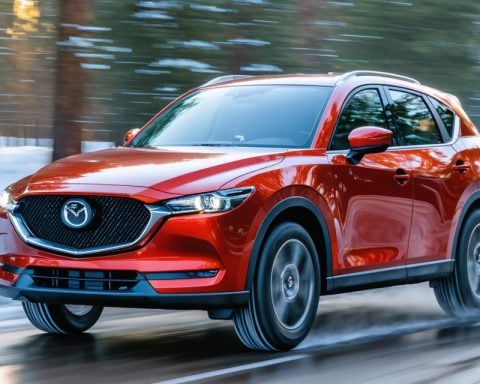- A recall affects select 2025 Rivian R1T and R1S models due to low beam headlights failing to illuminate in cold weather.
- The issue arises from improperly configured parts from an external supplier, posing safety concerns and conflicting with Federal Motor Vehicle Safety Standards.
- Rivian plans to remedy the defect by replacing the faulty headlight control modules free of charge, with notifications starting March 28, 2025.
- High beams remain operational, offering a temporary solution for drivers.
- This situation underscores the susceptibility of even advanced electric vehicles to environmental and mechanical challenges.
Amid the frigid embrace of winter, Rivian’s innovative electric beasts—the R1T pickup and R1S SUV—find themselves in a chilling predicament. A concerning recall has surfaced for select 2025 models, spotlighting an issue that leaves drivers quite literally in the dark. In the biting cold, these vehicles’ low beam headlights may stubbornly resist illuminating when ignited, raising eyebrows and safety concerns.
The cleared path across dimly lit roads can quickly transform into an abyss of uncertainty, as these headlamps fail to meet Federal Motor Vehicle Safety Standards. This isn’t merely a fleeting hiccup; the defect stems from improperly configured parts from an external supplier, marking an era where Rivian’s challenges seem to multiply with each season. Previously, these electric dream machines grappled with ice-laden headlights and a technology glitch that extinguished outside lights until a timely software patch arrived.
Relief, while promised, demands patience. Rivian ensures owners won’t bear the financial burden for fixes, as the company plans to replace faulty headlight control modules free of charge. However, notifications aren’t set to dispatch until March 28, 2025. Until Rivian’s repair cavalry arrives, the warning “Low beam lights not working. Service low beams soon.” will haunt the dashboards of the affected few, a stark reminder of their vehicular vulnerability.
A sliver of silver lining peeks through: high beams retain their reliability, offering a beacon of hope for uncertain journeys. Yet, the situation highlights a profound lesson—no vehicle, regardless of its cutting-edge creed, is immune to the icy scrutiny of nature and machinery. As winter’s chill unfurls, Rivian owners keep a wary eye on the horizon, awaiting resolution and the return of their unyielding brightness.
Headlight Hiccups: What Rivian Owners Need to Know This Winter
How-To Steps & Life Hacks: Dealing with Headlight Issues
1. Stay Vigilant: Regularly check both low and high beam functionality before setting off on a long journey, especially during winter when daylight is limited.
2. Temporary Solutions: Use high beams responsibly when driving in poorly lit areas, but switch to low beams or fog lights when approaching oncoming traffic to prevent glare.
3. Manual Override: Some vehicles may have a manual setting to bypass automatic headlight controls. Consult your owner’s manual for instructions on manual headlight operation.
4. Regular Maintenance: Keep the headlight lenses clean and clear of snow or ice buildup to maximize visibility and effectiveness.
Real-World Use Cases & Industry Trends
Rivian’s situation underscores a broader trend in the automotive industry where automakers face growing pains related to supply chain dependencies and the integration of advanced technologies. Electric vehicles (EVs) often incorporate sophisticated electronics that can introduce vulnerabilities.
Tesla, for instance, has also faced similar challenges with its software updates causing sporadic performance issues. The EV market continues to evolve with emphasis on improving quality assurances and rapid response strategies to maintain consumer trust.
Market Forecasts & Industry Trends
The electric vehicle market is projected to grow exponentially, driven by consumer demand for sustainable transportation solutions. According to BloombergNEF, EVs are expected to make up 58% of global passenger vehicle sales by 2040. Rivian, as a relatively new player in this space, must contend with both competitive pressures and the need for impeccable reliability.
Controversies & Limitations
Rivian’s recall not only poses safety concerns but also raises questions about quality control processes for emerging EV companies. The reliance on third-party suppliers introduces potential risks that can impact vehicle performance and brand reputation.
Features, Specs & Pricing
– Rivian R1T: Starting at around $67,500, offering a range of up to 400 miles on a single charge.
– Rivian R1S: Priced similarly, with rugged off-road capabilities and a spacious interior.
For updated pricing and specs, always refer to Rivian’s official site for the most current information.
Security & Sustainability
Rivian prioritizes sustainability, with a strong focus on eco-friendly materials and manufacturing processes. They are actively working to minimize their carbon footprint while ensuring safe and secure vehicle operations.
Insights & Predictions
As Rivian addresses this recall, they are likely to strengthen their quality assurance processes and develop more robust supply chain management strategies. The lessons learned will inform future product development, increasing resilience against similar issues.
Tutorials & Compatibility
Rivian’s online support resources provide tutorials and FAQs to assist owners with troubleshooting and maintenance. Users should regularly check their Rivian dashboard and app for software updates and vehicle status notifications.
Pros & Cons Overview
Pros:
– Innovative design and performance
– Strong focus on sustainability
– Continual software updates that improve vehicle performance
Cons:
– Dependence on third-party contractors for critical components
– Emerging brand with some growing pains
Actionable Recommendations
– Monitor Notifications: Keep an eye on communication from Rivian regarding updates and corrective measures.
– Scheduled Service Checks: Plan routine maintenance with certified Rivian service centers.
– Stay Informed: Engage with Rivian owner communities online for shared experiences and troubleshooting advice.
By implementing these steps, Rivian owners can navigate the current challenges more effectively, ensuring safer and more satisfying journeys until the recall is fully resolved.















